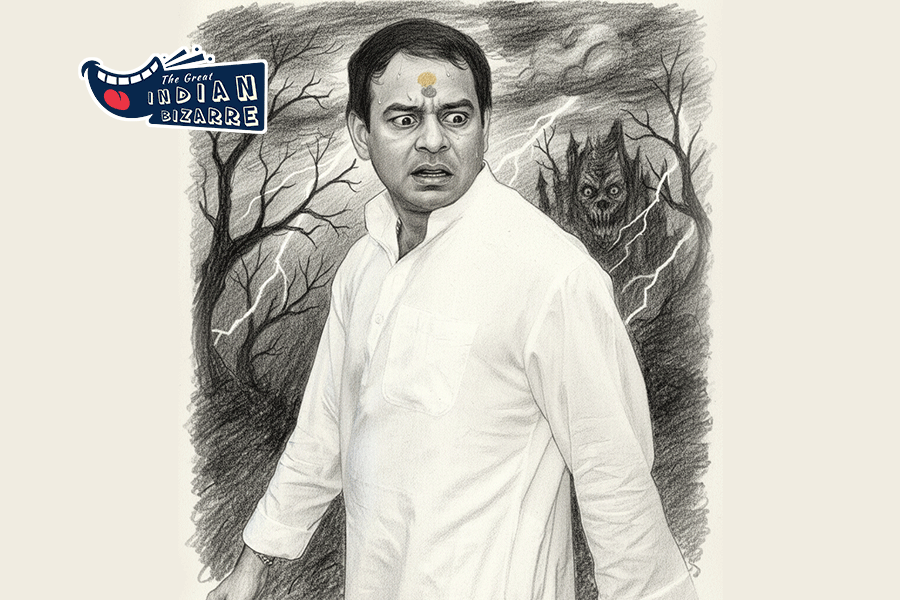 Monday, 22 December 2025
Monday, 22 December 2025
 Monday, 22 December 2025
Monday, 22 December 2025
Rishabh Pant's decision to bat with a broken foot at Old Trafford on Thursday exemplifies a unique thread running through Indian cricket — the willingness to play through excruciating pain when the team needs it most.
As the wicketkeeper-batter hobbled to the crease amid thunderous applause, he joined an exclusive list of Indian cricketers who have turned physical adversity into match-defining performances.
When Pant was struck on the boot attempting a reverse sweep off Chris Woakes in the final session of Day 1, the injury was immediately apparent. Taken off the field on a golf cart, scans revealed a fractured foot.
Yet when India lost Shardul Thakur for 41, Pant emerged from the pavilion, drawing cheers from both sets of supporters. "This shows what it means to play for India. Absolutely fantastic!" declared Sunil Gavaskar on commentary, doffing his hat to the brave batter.
Anil Kumble
The image of Anil Kumble bowling with his jaw wired shut remains one of cricket's most iconic displays of courage.
During the Antigua Test in 2002, Kumble was struck by a Mervyn Dillon bouncer while batting, spitting blood as scans revealed a fractured jaw requiring immediate surgery.
Medical staff advised him to fly home for treatment.
Instead, Kumble returned the next morning with his face swathed in bandages, bowling 14 consecutive overs despite being on a liquid diet and unable to speak properly. His spell of 14-0-29-1 included the prized wicket of Brian Lara, caught behind off his bowling.
The sight of India's premier spinner, jaw wired and in obvious discomfort, taking on the West Indies' batting lineup became folklore.
Viv Richards later called it "one of the bravest things I've seen" in cricket. Though the match ended in a draw, Kumble's act lifted the entire dressing room and epitomised the fighting spirit that would define Indian cricket for generations.
Cheteshwar Pujara
The Gabba fortress had stood unconquered for 32 years when Cheteshwar Pujara walked out to bat on a spicy Day 5 pitch in Brisbane. What followed was an extraordinary display of physical courage as Pujara absorbed 11 direct blows to his body — helmet, ribs, forearm, and fingers — with one delivery sending his visor flying across the pitch.
The 211-ball innings of 56 was struck at a strike rate of just 26.5, but it anchored India's record 328-run chase that ended Australia's Gabba dominance. Each blow seemed to motivate rather than deter Pujara, who later admitted the hits "motivated me to fight harder."
His grit became the defining image of India's historic 2-1 series victory.
Ravichandran Ashwin
On the same dramatic final morning at Sydney, Ravichandran Ashwin could barely move. A sudden back spasm had left him crawling on the floor of the dressing room, unable to tie his shoelaces or dress without assistance. The off-spinner required help from teammates just to put on his kit.
Despite the debilitating pain, Ashwin first bowled seven overs before taking guard alongside Vihari for one of Test cricket's greatest rescue acts. For 190 minutes, he faced 128 balls, scoring an unbeaten 39 while adopting a pain-minimising stance that relied solely on backfoot shots.
The 62-run partnership with Vihari off 259 balls secured the draw, with Ashwin negotiating a short-ball barrage while unable to bend his back properly. His courage under extreme physical duress became a cornerstone of India's series victory.
Hanuma Vihari
On the final day at Sydney in 2021, with Australia needing just five wickets and over a session remaining, Hanuma Vihari faced an impossible task. Scans had revealed a Grade-2 tear in his right hamstring, an injury that would rule out any physical activity for weeks.
Yet with the series hanging in the balance, Vihari took guard knowing he couldn't run.
For 237 minutes, he faced 161 balls without scoring a single boundary, his unbeaten 23 becoming one of Test cricket's most valuable innings. Unable to take quick singles, Vihari adopted a unique method — batting six balls, then resting for six to stretch his injured leg.
Alongside Ashwin, he frustrated Australia's attack, saving the Test and keeping the series alive at 1-1. Captain Ajinkya Rahane later described the effort as "as good as winning a Test," setting the stage for India's historic Gabba triumph in the next match.
VVS Laxman
Though his injury was pre-existing rather than sustained during play, VVS Laxman's 281 at Eden Gardens in 2001 deserves inclusion for the sheer physical toll it extracted.
A slipped lumbar disc caused shooting pain throughout his innings, with team physio Andrew Leipus treating him every night just so he could take the field.
Promoted to number three in India's follow-on, Laxman batted for 631 minutes, often grimacing mid-stroke as the pain shot through his spine. His 281, then the highest individual Test score by an Indian, came off 452 balls with 44 boundaries, each run extracted through gritted teeth.
The innings not only turned the match but transformed Indian cricket's belief in its ability to achieve the impossible.
Sachin Tendulkar
In the fourth innings of the first Test against Pakistan at Chepauk in 1999, India were chasing a target of 271. The top order collapsed early, and India looked doomed at 82/5. Enter Tendulkar, wincing with every movement due to a nagging back spasm that had been troubling him throughout the series.
Despite the pain, he played one of the most calculated and courageous innings of his career. He crafted 136 runs, refusing a runner and choosing instead to fight through the discomfort.
He took India within 17 runs of victory, but once he fell trying to counter Saqlain Mushtaq, the rest of the team folded.
"He was half the man physically, but twice the man mentally," said Wasim Akram after the match.
The Chepauk crowd gave him a standing ovation, even though India lost.
Mohinder Amarnath
During the 1983 Bridgetown Test, Mohinder Amarnath faced one of the most fearsome pace attacks in cricket history. When a Michael Holding bouncer split his chin open, Amarnath retired hurt on 18, requiring six stitches to close the wound.
India was struggling at 135/5.
Amarnath's return changed everything. Walking back to the crease with his chin still tender, he announced his intent by hooking Holding for six—a shot that stunned the crowd and rattled the West Indies pace battery.
He went on to score 80 in one of the most audacious displays of batting, helping India reach 296 on a pitch where survival seemed impossible.
His nickname "Jimmy the Hook" was earned through such displays of courage, and his series average of 66.44 across five Tests against the world's best pace attack cemented his reputation as one of India's bravest batsmen.
Dilip Vengsarkar
Few cricketers have made a habit of retiring hurt and returning to excel quite like Dilip Vengsarkar. At Eden Gardens in 1987 against the West Indies, a blow to his hand forced him off the field with his score on 102 not out.
Vengsarkar returned the next morning to ensure his innings remained unbeaten, helping India secure a draw.
In 1979 at Kolkata against Australia, rib bruising forced Vengsarkar to retire hurt on 89, only for him to re-enter and complete his innings, again salvaging a draw for India.
Vengsarkar holds the record for the most retire-hurt instances by an Indian batter with six such occasions, each time returning to contribute to his team's cause.
Sunil Gavaskar
The little master's courage was never more evident than during the Adelaide Test in 1985. Struck just above the wrist by Craig McDermott, Gavaskar's forearm swelled, forcing him to retire hurt on 39 not out.
With India in trouble at 247/5, his injury seemed to have handed Australia the advantage.
Gavaskar's return the next morning wearing a custom arm-guard and skull cap produced one of his finest innings. Batting for 373 balls, he crafted an unbeaten 166 that batted Australia out of the game, hitting 17 boundaries while managing the pain in his injured forearm.
His ability to adapt his technique while injured—relying more on timing than power—became a masterclass in pain management.
Kapil Dev
During the 1983 World Cup, Kapil Dev played through a severe thigh strain in the group stage clash against Zimbabwe. India were reeling at 17/5 when Kapil walked in. Despite the pain, he unleashed an iconic innings of 175 off 138 balls*, rescuing India from the jaws of elimination.
According to several accounts, Kapil could barely run between the wickets due to his injury and relied on sheer timing and power to muscle boundaries. At one point, he hit a six while visibly limping, prompting the dressing room to erupt.
“I wasn’t even sure I could bat that day,” Kapil later recalled. “But sometimes, the body listens when the heart speaks louder.”







